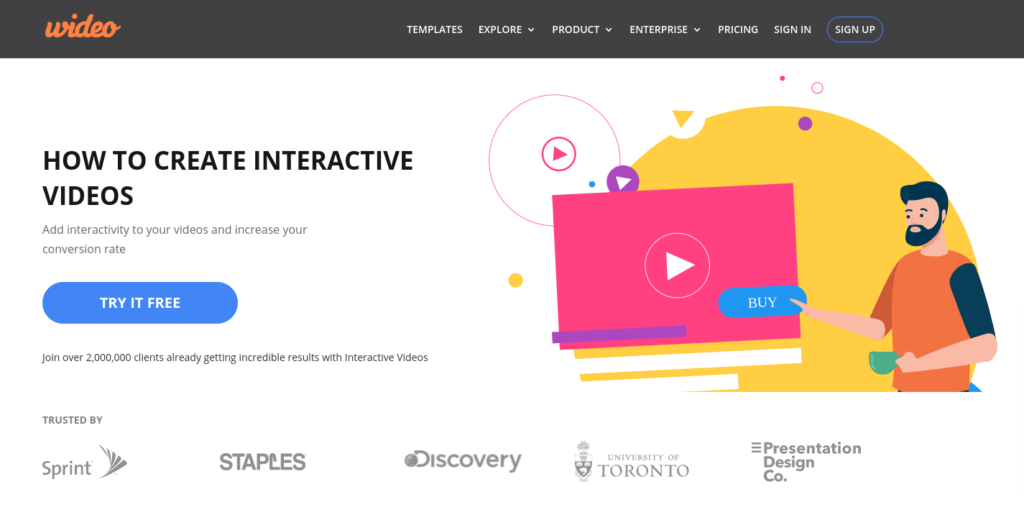There’s no doubt about it – people absorb information in several different ways. That’s why, for many years, educational researchers agreed that all people learned best in one of seven ways.
These “ways of learning” are referred to as the seven learning styles, and most of us have heard of them. They are:
- Visual (spatial)
- Aural (auditory)
- Verbal (linguistic)
- Physical (kinesthetic)
- Logical (mathematical)
- Social (interpersonal)
- Solitary (intrapersonal)
Because the learning styles seemed to make practical sense, most of the world bought into them (and most of the educational world still does). However, recent research shows there’s a good chance the learning styles don’t actually exist.
And that means spending your energy to ensure your online courses appeal to all seven could be a waste of time and money.
But, if not the seven learning styles, then what? How can you anticipate the needs of your students and keep them engaged? It seems that the answer is scenario-based learning.
In this article, we’ll talk about what scenario-based learning is and show you an affordable and simple way you can apply it to the design of your online courses. Let’s go!
An Introduction to Scenario-Based Learning

Scenario-based instruction exposes students to real-world learning experiences that enable them to gain the skills and information they need to succeed.
The approach is proven to help students retain information within the working memory and long-term memory. Scenario-based instruction covers four basic principles:
- It’s realistic
- It’s earner-centric
- It involves applied learning strategies
- It’s Interactive
4 Characteristics of Scenario-Based Learning
Following is an overview of each of the four characteristics of scenario-based learning. We’ve also included a suggestion for how you can include them in your online course design.
1. Keep Things Realistic
The more realistic the scenarios you present, the more engaged your learners will be. For example, if you want your students to learn how to cook gourmet meals at home, consider addressing a situation where a meal is ruined because a phone call distracts the chef.
Or, if your course teaches the basics of personal finance, present scenarios where unexpected costs arise, such as a car accident or an invitation to a destination wedding.
Regardless of the course topic, the point is to keep the content as “real-world” as possible. Since your course should be in your personal area of expertise, you should have no problem coming up with plenty of scenarios from your own experience.
2. Be Learner-Centric
For success, scenario-based instruction must be based on a thorough understanding of the student’s needs. That means, before you start designing your course, make sure you understand these foundational points:
- The core skills your learner already has
- The core skills they want to develop through your course
- The learner’s main motivation for taking your course
- The most likely problems the student will encounter as they progress through your course
As mentioned above, you should know the topic you’re teaching inside and out. Having been a learner in the same domain at one time, you shouldn’t have trouble defining these foundational points.
The important thing is that you define them and refer back to them as you create your course.
3. Use Applied Learning Strategies
Here’s where all that learner-centric knowledge comes in handy. Use the information to present scenarios allowing the learner to use skills they already have to obtain skills they don’t.
With applied learning strategies, students learn by reading and hearing but also by doing. With tools like interactive video (discussed below), applied learning strategies are easier to incorporate in the virtual classroom than you might think.
4. Keep it Interactive
The more interactive the learning materials, the better engaged the student. This idea draws upon the realistic aspect of scenario-based learning, where presenting real-life experience is favored over delivering theoretical information alone.
Again, interactive video is an awesome way to add an interactive element to your online course.
Interactive Video: A Simple and Affordable Way to Include Scenario-Based Learning in Your Online Course

If you’ve done any research, you might already know that adding interactive elements like simulations to your courses can be super complicated and expensive. But interactivity doesn’t have to be complicated and expensive, thanks to interactive video.
Through interactive video, you can present scenarios by creating stops at specific points, asking the viewer to respond, then presenting buttons that link to the video section that corresponds to their answer.
Platforms like Wideo walk you through interactive video creation and require no expert experience whatsoever.
Another great tool, VidApp, allows you to sync your videos and content across platforms and includes an interactive calendar that automatically tracks and marks videos watched. The tool also has an interactive daily journal.
Conclusion
Recent studies show that learning styles may be a myth. So how can you keep your students engaged in your material?
By including scenario-based learning methods in your online courses, you can provide a rich and enjoyable learning environment and set your students up for success.
In this article, we discussed the following four characteristics of scenario-based learning and how to add them to your online course using interactive video:
- Realistic
- Learner-centric
- Applied learning strategies
- Interactive
Do you have any questions about how to apply these approaches to your online course? Let us know in the comments section below!
If you liked this article, be sure to subscribe to our newsletter in the box up to your right!













Homeschooling allows for a flexible schedule, catering to your child’s unique learning pace and style.